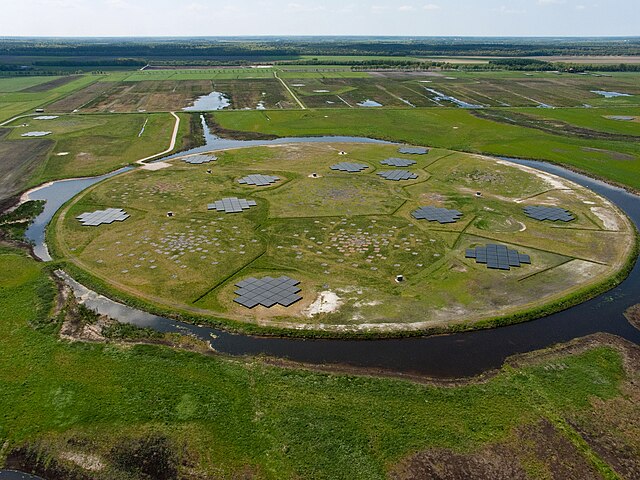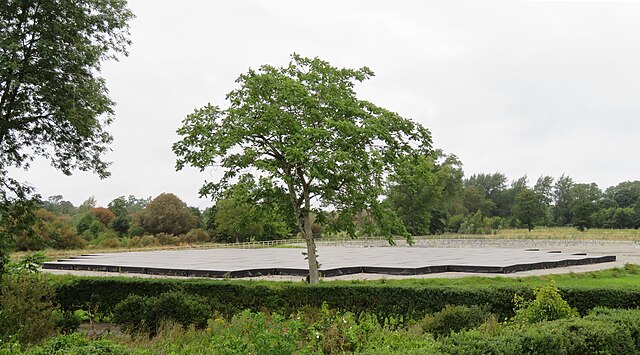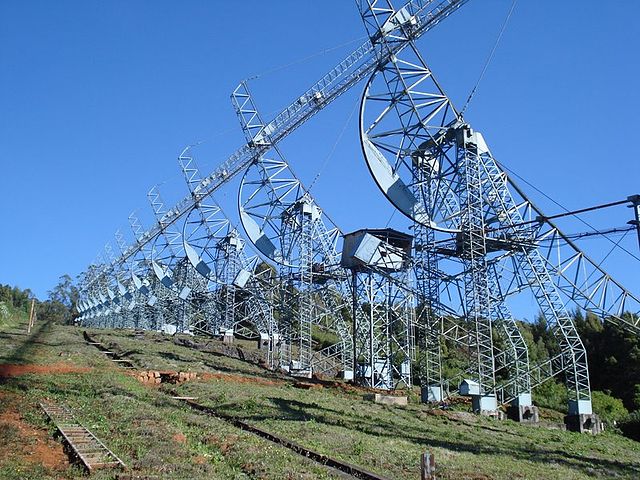The Low-Frequency Array (LOFAR) is a large radio telescope, with an antenna network located mainly in the Netherlands, and spreading across 7 other European countries as of 2019. Originally designed and built by ASTRON, the Netherlands Institute for Radio Astronomy, it was first opened by Queen Beatrix of The Netherlands in 2010, and has since been operated on behalf of the International LOFAR Telescope (ILT) partnership by ASTRON.
The LOFAR core near Exloo, Netherlands. The two bridges on the left give a sense of scale.
Low-band antenna with electronics cabin in the background
The 60 m diameter LOFAR station consisting of 96 dipole antennas (foreground) at Bad Münstereifel- Effelsberg, next to the 100 m radio telescope (background), both run by the Max Planck Institute for Radio Astronomy Bonn, Germany
The Irish LOFAR array (I-LOFAR) in Birr, County Offaly.
A radio telescope is a specialized antenna and radio receiver used to detect radio waves from astronomical radio sources in the sky. Radio telescopes are the main observing instrument used in radio astronomy, which studies the radio frequency portion of the electromagnetic spectrum emitted by astronomical objects, just as optical telescopes are the main observing instrument used in traditional optical astronomy which studies the light wave portion of the spectrum coming from astronomical objects. Unlike optical telescopes, radio telescopes can be used in the daytime as well as at night.
The 64-meter radio telescope at Parkes Observatory as seen in 1969, when it was used to receive live televised video from Apollo 11
Antenna of UTR-2 low frequency radio telescope, Kharkiv region, Ukraine. Consists of an array of 2040 cage dipole elements.
Full-size replica of the first radio telescope, Jansky's dipole array of 1932, preserved at the US Green Bank Observatory in Green Bank, West Virginia.
Ooty radio telescope, a 326.5 MHz dipole array in Ooty, India








